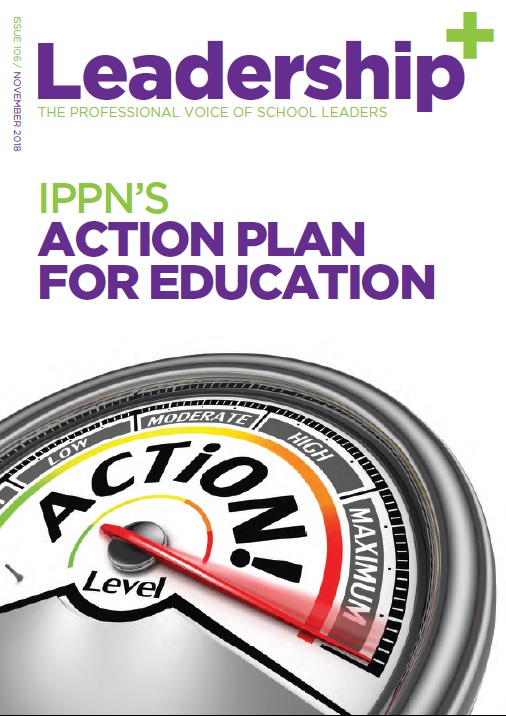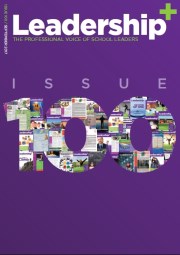Seat belts to be fitted on school bus fleet
- Published: 27 July 2005
End of 'three for two' seating for 2nd level students next term
The provision of seat belts for all pupils and the elimination of the 'three for two' seating arrangement on school buses has been announced today by the Minister for Education and Science Mary Hanafin T.D., and Minister of State with special responsibility for school transport, Ms Síle de Valera T.D.
Measures outlined today include;
Adding over 130 large buses to the school bus fleet - 50 of these will go into service in the next school term, with the balance coming into the system in 2006. Included as part of this will be the purchase of 20 custom built school buses, of different types, to test their suitability.
Hiring in an additional 250 mini buses from the private sector from September 2005.
Immediately start fitting lap belts on all seats on the Bus Éireann school bus fleet. A target date of end December 2006 has been set for all private buses contracted to the scheme to be fitted with approved seat belts.
All school transport to be on a 'one child per seat basis' by December 2006. In the meantime, the 'three for two' seating arrangement will cease for all 2nd level students next term.
From September 2005, the calculation of the seat availability for concessionary/catchment boundary passengers will be on a 'one child per seat' basis.
Minister Hanafin said "this comprehensive package, as agreed by Government this week, will see each child with a seat of their own and the use of a seat belt for their journey to and from school. This additional investment in the school transport system will see more buses from Bus Éireann and the private sector added to the school bus fleet. Our school transport system will continue to maintain the highest standards.
These new measures are part of a continuing programme of expansion and improvement in the school transport system. Safety of all pupils travelling in the school transport system has always been and will continue to be our primary concern."
Minister Hanafin went on to say "the Government had already given a commitment to phase out of the three for two system on school buses. This is now being expedited. The fitting of seat belts will commence from autumn this year on all Bus Éireann buses transporting school children and be completed on all private buses in the scheme before the end of December 2006."
Minister of State, with special responsibility for School Transport Síle de Valera said "the fitting of seat belts on all buses in the school transport system is part of our commitment to ensuring that the safety remains a top priority for the Department and Bus Éireann. My Department, along with the Departments of Transport and Finance and Bus Éireann have looked at best international practice and EU standards in relation to the use of safety belts. International expert advice was also obtained. What we plan is the phased elimination of the three for two seating and introduction of seat belts on all school buses in the shortest feasible timeframe.
We are looking all the time at following best practice and will continue to work with our colleagues in the Department of Transport and Bus Éireann on wider safety issues."
New Zealand Principal visiting Ireland in September wishes to visit small schools.
- Published: 26 July 2005
My name is Paddy Ford. I am Principal of a small urban school in Dunedin ,New Zealand. I have won a scholarship from the local Principals Association and am visiting Ireland from the 12 -21 september. I would love to vist some schools and in particular I am interested in looking at schools that have merged together or been consolidated on one site...either urban or rural. I am on a self drive tour and can get around by myself. In particular I would love to have a school to visit in Galway.
New Zealand has been going through a process of merging several rural schools onto one site with accompanying loss of staff, identity and local culture. I promise not to take up too much of your time but would be interested in your perspective on Small schools and teaching principalship.
If you'd like to have me visit your school please contact me at paddyf@nzpf.ac.nz
Hanafin vows on unruly students
- Published: 18 July 2005
EDUCATION Minister Mary Hanafin has
rejected criticism that her department has failed to provide adequate
levels of support to teachers who have to deal with disruptive students.
Ms Hanafin yesterday promised that she would
give strong backing to any legislative changes which might be
recommended in a forthcoming report by a special task force set up to
examine the problem.
The minister said she was also open to the possibility of establishing special facilities known as student referral units whereby disruptive pupils would be removed from their normal classes.
However, Ms Hanafin said the experience of such units had so far failed to provide positive proof that they helped to address the problem.
Her comments followed complaints by the Association of Secondary
Teachers of Ireland (ASTI) that the Government had ignored the
recommendations of several earlier reports which also examined the
problem of disruptive pupils.
An interim report by the Task Force on Student Behaviour in Second
Level Schools published earlier this month highlighted how 5%-10% of
second-level students are believed to be engaged in disruptive
behaviour, although only "a very small proportion" were involved in
extreme misconduct.
ASTI president Susie Hall yesterday issued an appeal to Ms Hanafin that it would not "go the way of previous reports" and not be put into practice.
Ms Hanafin said the solution rested with the involvement of the whole school community, including the parents of pupils in tacking disruptive behaviour.
She promised the task force's report was "certainly not going to sit on a shelf".
Click here to access the article on the Irish Examiner website - www.irishexaminer.com
Free broadband access for schools
- Published: 16 July 2005
ALL schools will have broadband access before the end of the next school year, giving free, 'always on' high speed links to the Internet.
Seven contractors have been appointed to connect the 3,925 schools as part of an €18m joint government and industry deal and work got under way last month.
All schools will be have their broadband connections by March next year.
A National Schools Network has been established to provide managed internet access, email, security controls, content filtering and other services designed to enhance the educational process.
The National Council for Technology in Education (NCTE) has also set up a help desk for schools and, along with the schools network, brings the value of the programme to €30m over the next three years.
Education Minister Mary Hanafin said that the provision of broadband access to all schools represented a crucial element in the Government's policy of integrating information and communications technology (ICT) into teaching and learning.
Click here to access the article on the Irish Independent website - www.unison.ie
Contracts for delivering Broadband for Schools now in place
- Published: 15 July 2005
The Ministers for Communications, Marine and Natural Resources Noel Dempsey T.D. and for Education and Science Mary Hanafin T.D. today updated progress in relation to the Schools Broadband Access Programme. The Programme is being undertaken in partnership with industry, following the establishment of a three year €18m joint Government IBEC / TIF (Telecommunications and Internet Federation) Fund targeted at local connectivity provision to schools. In addition local connectivity would be moderated through a National Schools Network providing a range of security and content filtering facility for schools and schools assisted and advised on the process through a National Service Desk.
A public procurement process was undertaken in 2004 designed to achieve the optimal solution for each school having regard to the broadband delivery technology options available. This has now been completed and a mix of broadband technologies will be utilised in schools, including wireless, fixed line and satellite technologies.
Further to the announcement earlier this year on the results of the competitive tender process, all seven successful operators have concluded contracts and are working to connect all schools across the country as speedily as possible in what is a complex and multi-faceted project.
The breakdown by delivery technology will see the delivery of connectivity to 841 schools by fixed line (e.g. DSL), 1,507 by Wireless and 1,577 by satellite and a full schedule listing the services to be provided to individual schools can be found on the web-sites of both Departments. Eircom will supply routers to some 3,393 schools while BT Ireland will supply same to three further schools.
These Operators will be installing connectivity and routers over the Summer, throughout the Autumn and up to March 2006 to Primary and Post-Primary schools nationally.
The National Network has been established within HEAnet and the National Service Desk created under the NCTE and operated by Cara Computing Ltd. The overall cost of the programme, including the contribution from Industry will be in the region of €30m over the next three years.
Both Ministers acknowledged the part being played by the Telecommunications Sector in the provision of broadband connectivity to schools in relation its contribution to the €18 million joint IBEC-TIF / Government fund and re-iterated their thanks to the contributing companies which include BT Ireland, Digiweb, Eircom, eNet, Irish Broadband, MCI, Meteor, NTL O2 and Vodafone
Minister Dempsey noted that 'the Broadband for Schools Programme marks a significant step towards extending the broadband community across the country and showcasing the possibilities that broadband can bring to the learning generation.'
Minister Hanafin said that 'the provision of broadband to schools
represents a crucial element in the Government's policy of integrating
ICT into teaching and learning at first and second level. I have every
confidence that both teachers and pupils will derive great benefit from
this additional and worthwhile facility.'



















































